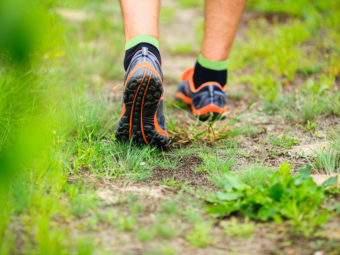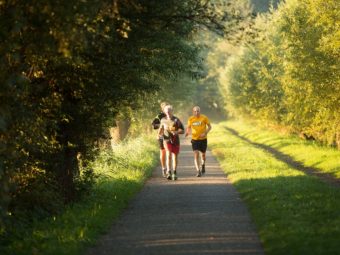Most runners at some time will experience an injury or illness whether from running or simply living on this earth. Depending on how you choose to do deal with the setback it just might make you a better runner when you do return to running. There are things you could work on that would improve your strength and aerobic capacity without running.
Cross training – when approved by a doctor – following an injury/illness is a great way to help maintain your aerobic capacity. Several types of activities usually recommended are biking, swimming, and pool running. All are known to reduce impact to your legs while still providing a challenging aerobic workout. Pool running reduces you body's impact by about half that of normal running. If done correctly, you can improve your core strength but you must remain vigilant not to bend at the waist when running in a pool, one of the most common mistakes with form. I have always found that “pelvic rotation” and “lifting from the crown” focuses work well with pool running.
Practicing breathing patterns is something that you can do any time. But when you're down for the count, it might also help you with any stress you might be experiencing. Studies have shown deep breathing helps to reduces stress. Basically the deep breathing pattern sends a message to the brain to relax, which is then transmitted to the body. This calming message will help reduce your heart rate and your blood pressure. The most effective way to accomplish this is to use a metronome playing the Waltz Beat. The one-two-three (accented on three) rhythm is the most effective way to develop the skill to use this relaxation technique. Practicing while not running helped me get used to it and made the transition to running easier (I'm the girl on the dance who can't seem to keep the beat).
Strength training does not always have to include weights. Working on your core and balance could help you prevent future injury. For example, just engaging your column and maintaining it while you stand on one leg can help. If it seems too easy just close your eyes and feel for the tripod on your foot while your leg remains relaxed. Check in with your column again. If you have a full length mirror, check to ensure your column is intact. Repeat on the other side. This practice will help you build that balanced relaxed muscle memory that you will want to take with you on your first run when you are ready to return.
Exercises that strengthen your core will also help get you ready for your return to running. So if you’re sitting down while you're reading this make sure you sit up in your chair. Pretty much what you are shooting for is to lengthen the back of your neck, shoulders relaxed and balanced over hips evenly, and your core is engaged. Try to do this any time you remember as it will help you develop an efficient running posture while building stronger core muscles.
Developing a Yoga practice can help with muscle strength and sharpen your mental focus. Practicing restorative yoga will help with flexibility and agility while helping correcting modalities to amend muscular imbalances, preventing overuse injuries. The mental focuses that you develop from holding the poses can come in handy later on challenging runs to help you through difficult times.
If you have been noticing that you are having repetitive pain, maybe you might consider a two week break from running. Cross training will help you keep your aerobic capacity and strength training could help you avoid a longer break from running. When you do return to running consider having a video running analysis done to see what you can do to improve your form.
The time away from running can help you prepare to come back as a stronger, sharper focused, relaxed, and more balanced runner. So maybe this timeout is not all that bad but maybe a gift to yourself.



